Groundhog Day is a show that was close to perfect right out of the gate. And yet, from its first public performance in July 2016 right through to the revival currently running at the Old Vic, its creators have never stopped striving to make it even better.
It’s a compelling real-world illustration of one of the show’s most important, and most inspiring, ideas: that it’s never too late to try to change and grow – and that it’s worth making those changes, even tiny ones, as you strive towards making things just a little bit better.
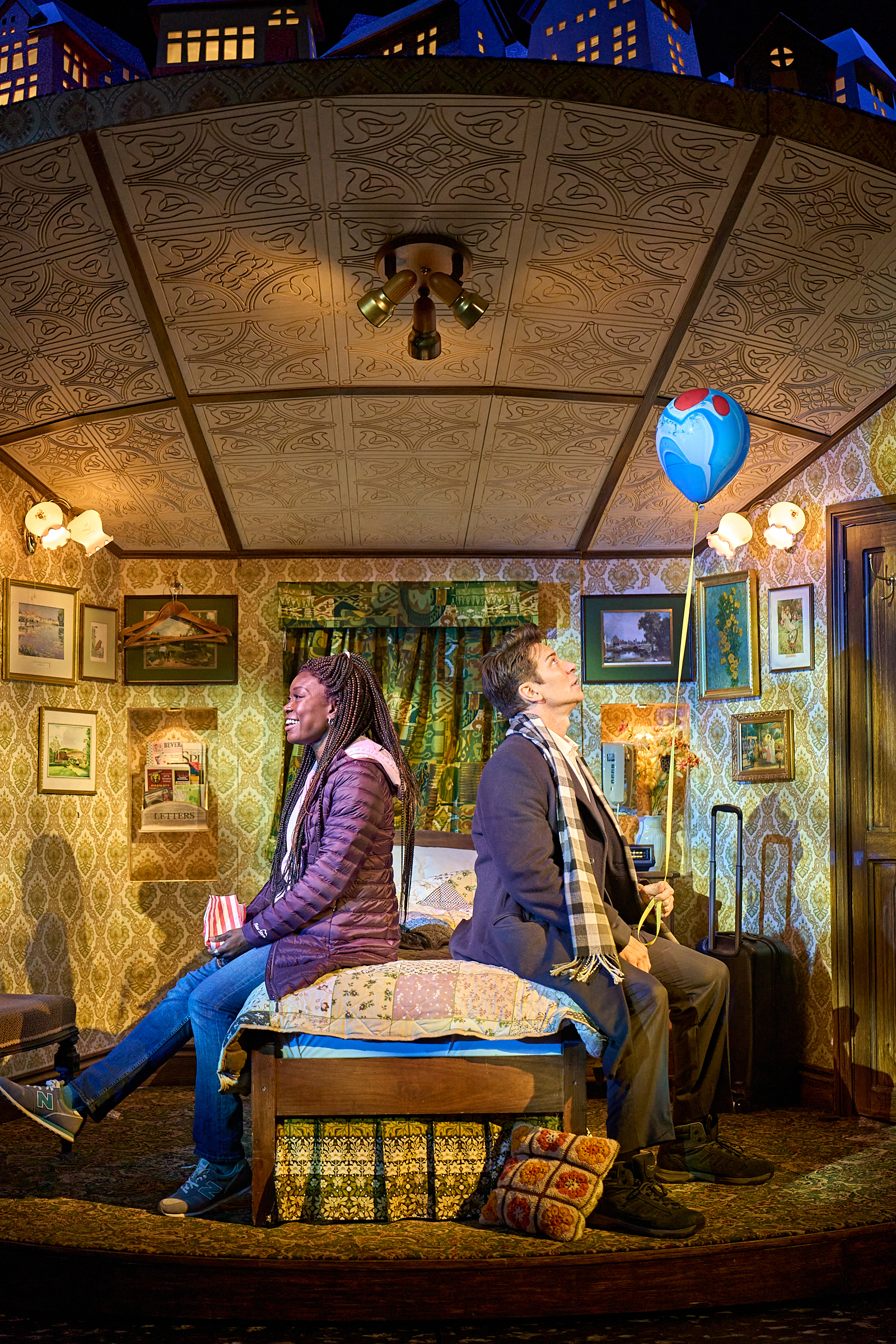
That the Groundhog Day team (led by Matthew Warchus, Tim Minchin, and Danny Rubin) has clearly taken that lesson to heart has been apparent since 2016, when a month’s worth of previews brought countless tweaks and larger revisions, an iterative process resulting in a five-star smash (read my 2016 review here).
Watching those changes unfold was one of the most interesting experiences I’ve ever had as a theatregoer.1 It started with the very first public performance of this show, on 15 July 2016 – a preview turned public dress rehearsal due to the complex technical elements of the show.
I don’t think I’ve ever seen a theatre audience express as much joy in a show as on that night. We were warned at the beginning there might be show stops: there weren’t any. Any concerns that the show might not be ready yet were quickly swept away with the audience’s laughter and applause, ongoing throughout the evening. This show (and its sensational star, Andy Karl) was the real deal – and the full standing ovation that lasted for a good few minutes at the end of the performance made it clear the sentiment was unanimous.
Although I’d only bought the one ticket, I knew I had to repeat this magical experience. (A quick look at my email inbox from that day shows that at midnight that night, I bought another ticket; then, at 1:36am, I added three more.)
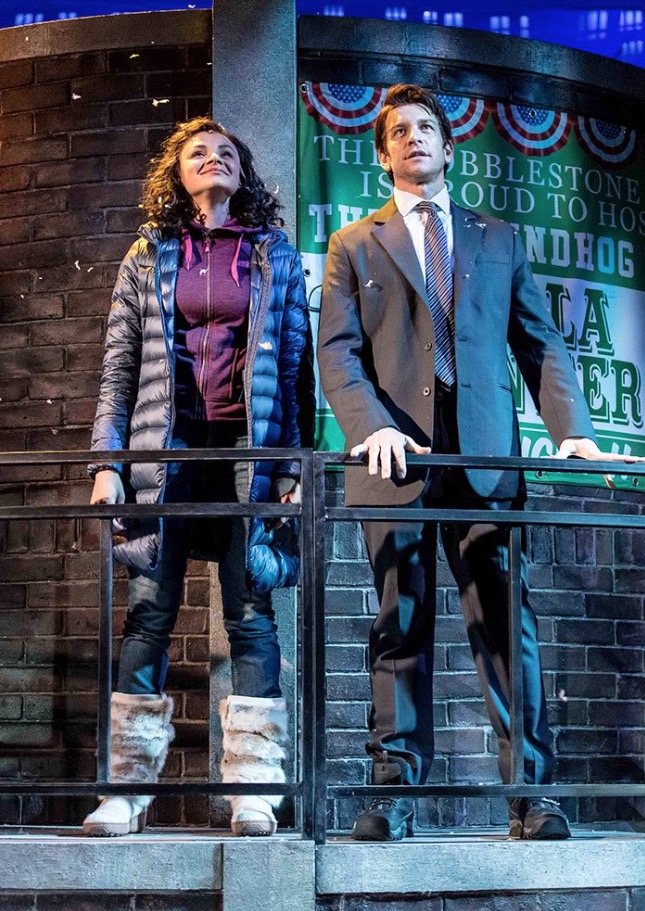
I went to several previews over the next few weeks, and at every performance, I noticed changes to the last time I’d been. The show was in great shape from the start, and so the changes were relatively minor: no adding or removing songs or scenes, for instance. But so many other details changed: words or lines here and there, the design, the music. There was an element of experimentation, too: sometimes something would change one night, and on my next visit, it would be back the way it was before.
The cast, too, was making tweaks. Words gained nuance; lines felt more lived in. A remark that consistently got big laughs, drowning out the next piece of dialogue, gained a pause after it to allow for the audience’s response.
Sometimes it was the orchestration that changed: “Seeing You” initially started with piano chords, until one night guitar strums were in its place. Sometimes it was costumes: the groundhog on drums at the end was given a bow tie, matching the poster in the bar advertising the gala dinner. And sometimes it was the set: at first, Phil and Rita climbed a few stairs to get to the “observation deck” at the gala; later, that part of the set was removed, placing them on the stage floor.
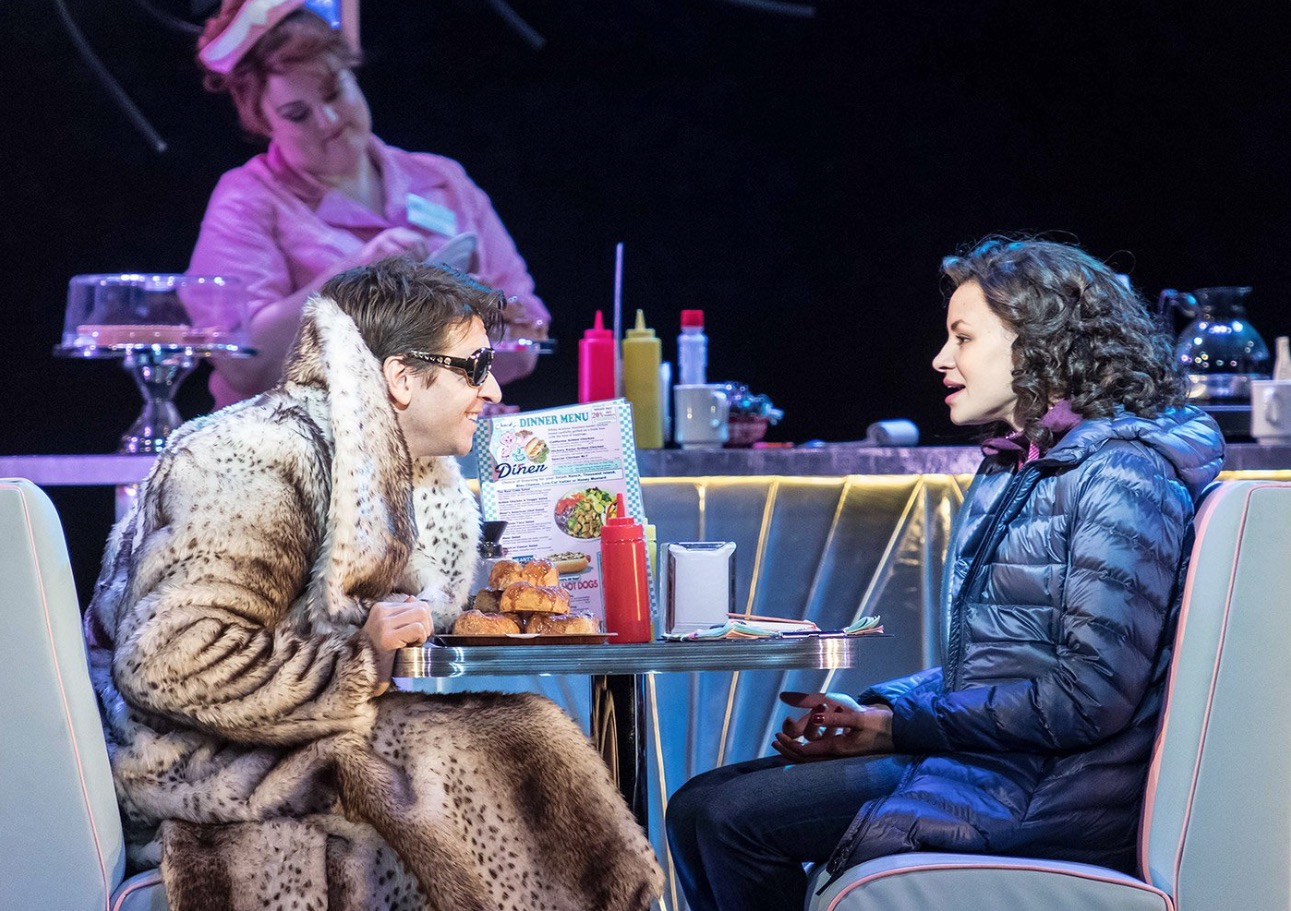
It was always interesting, too, to try to figure out why the changes were made. Sometimes it was clear: Nancy and Larry originally shared a glance, but this was later expanded to a moment where they bump into each other and meet, better setting up their later dance at the gala. In another change, I puzzled over a Mr. Coffee reference that was switched to a more generic “coffee machine,” until I figured out that a British audience probably wouldn’t be familiar with the American brand. And in early previews, there was a third booth in the diner, where Phil and Rita sat – then, it was taken away, seating them instead on stools at the counter. At the time, I figured this was because the booth made it difficult to see them from certain seats in the audience. In hindsight, however, giving the characters the freedom to move around during those scenes was the real benefit – who can forget Phil, clad in an ostentatious fur coat and sunglasses, attempting to seduce Rita?
There was also originally a moment in Phil’s late night talk with Rita after “If I Had My Time Again” where he does a flashy card trick – this disappeared one day in favor of Phil memorizing seven volumes of almanacs (after the 2016 run, this was again changed to just one almanac). At first, I was surprised that something that looked like it took a long time to learn could be so easily discarded – but upon reflection realized that at this point in the show, it felt right to change the thing he learns to something more obviously useless. It also served as a clearer illustration of just how long Phil had been stuck in February 2nd.
There were places where the humor was punched up (like Rita’s description of Phil as “dressed like something from a pet store,” which became the much funnier “dressed like a pet store”). And there were places where the characterizations and relationships were deepened (like added dialogue for Phil letting us know that during the perspective-changing day he spent with Rita, he’d opened up to her about his suicides – lines that were later taken back out after this run).
Of course, my view of these changes was very limited, going to only a handful of previews out of a month’s worth of performances. I always wondered what changes I missed when I wasn’t there. But spotting something new each time was fascinating. It felt like a real insight into the show’s creative process – like watching a painter apply the final brushstrokes to a masterpiece.
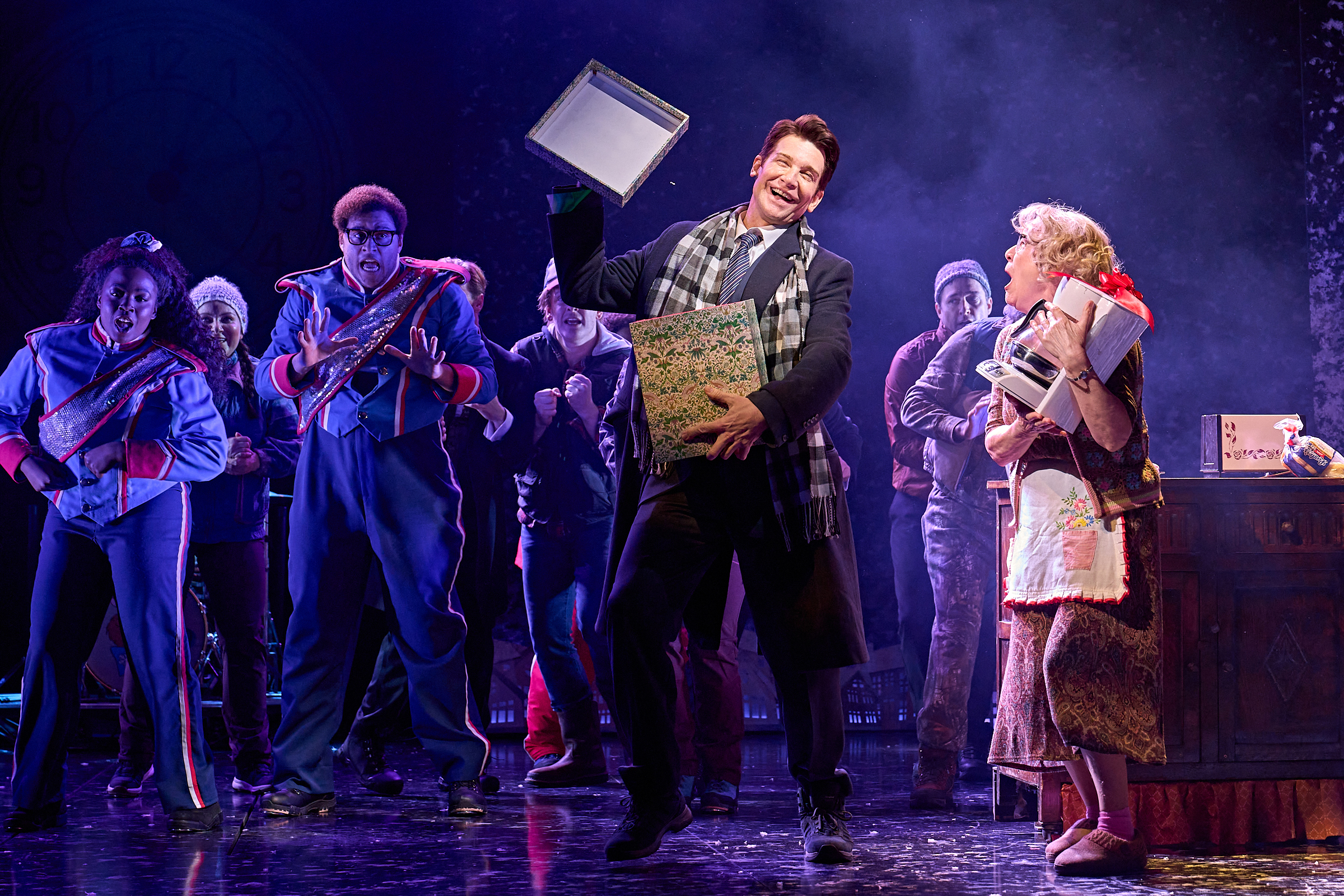
Seven years later, Groundhog Day is back, with Karl reprising his unparalleled performance as Phil. With the original run garnering two Olivier Awards, myriad rave reviews, and nightly sellouts, the team could have replicated it exactly and no one would have complained. But rather than take this easier path, they’ve continued to search for the next thing that will make it better – and there’s something incredibly moving about that.
It’s been riveting, for instance, to watch Karl draw out new facets of the character. His performance in 2016 was extraordinary, a tour de force nailing not only the humor but also the deep emotional truths of the show. In this year’s revival, he builds on this knockout performance by delving into the details.
He’s finding new laughs, like when he shows Phil still hasn’t gotten used to the taste of sweet vermouth after two tries. He’s showing us further depths to Phil’s distress, like when he wakes up after his first suicide and touches the side of his head where he’d placed the gun as though expecting to find blood. And he’s adding countless little character moments that illustrate just how well he knows Phil Connors – from hurrying himself out of bed on what he thinks is February 3rd so he can get out of this place, to the way his frustration over the lack of a decent cup of coffee makes its way into his existential despair, to the realization that hits him on repeating “I know everything” as Rita falls asleep in his room.
Every performance is a little different, but with each one you can see he’s really living the character every step of the way.
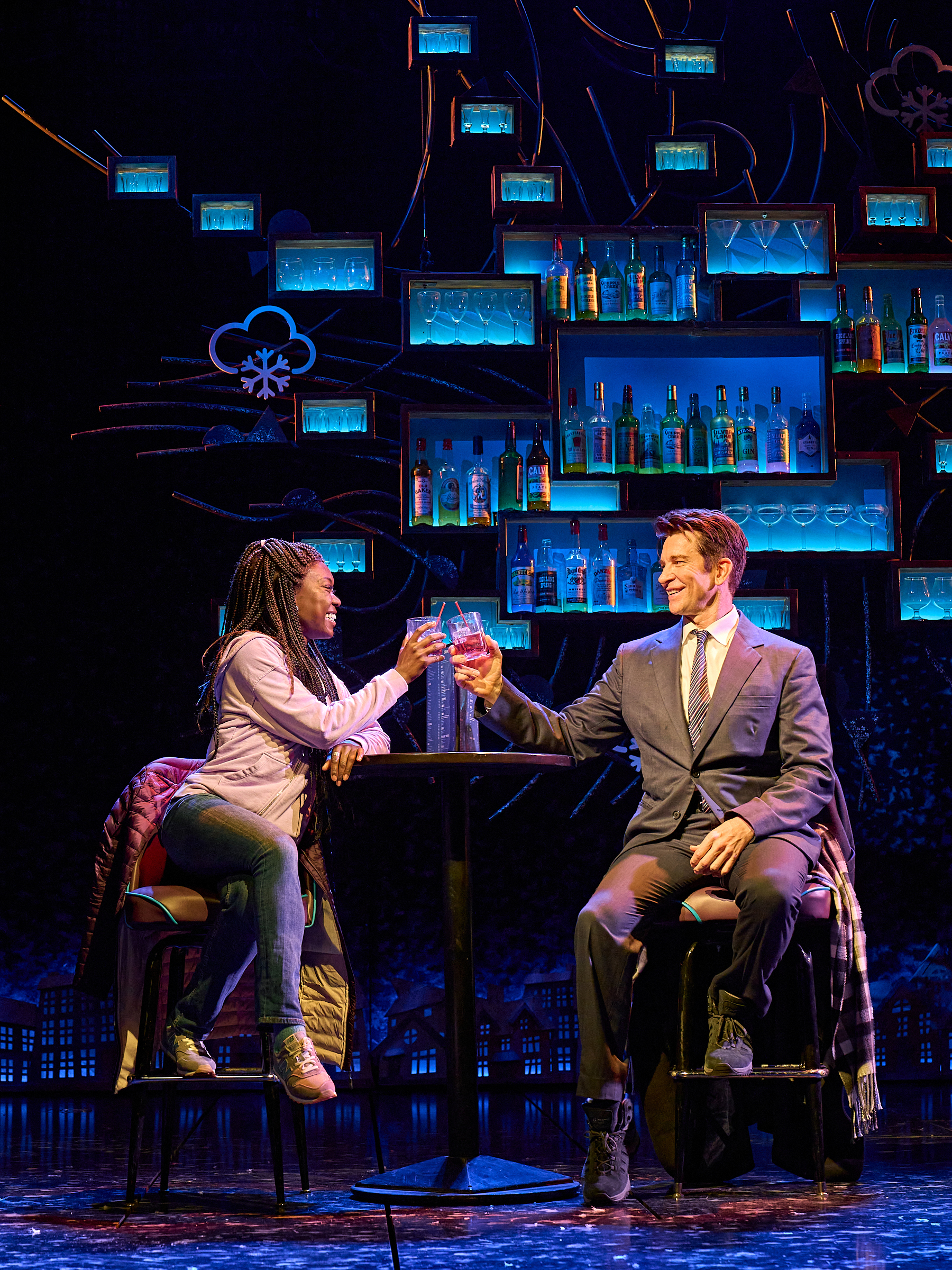
Matthew Warchus has implemented a number of big changes for this revival: the quintuple revolve is gone, the ensemble is a little smaller, there’s new choreography (by Lizzi Gee), and there are some differences in the sets, costumes, and props. But what’s most interesting are the smaller-scale shifts (like the much-discussed tweak to the lyrics of “If I Had My Time Again,” where instead of sleeping with “one dude when I was bored,” it’s “some dudes”). These alterations demonstrate that the show’s creators are still tinkering with the show with the same attention to detail they gave those first previews back in 2016.
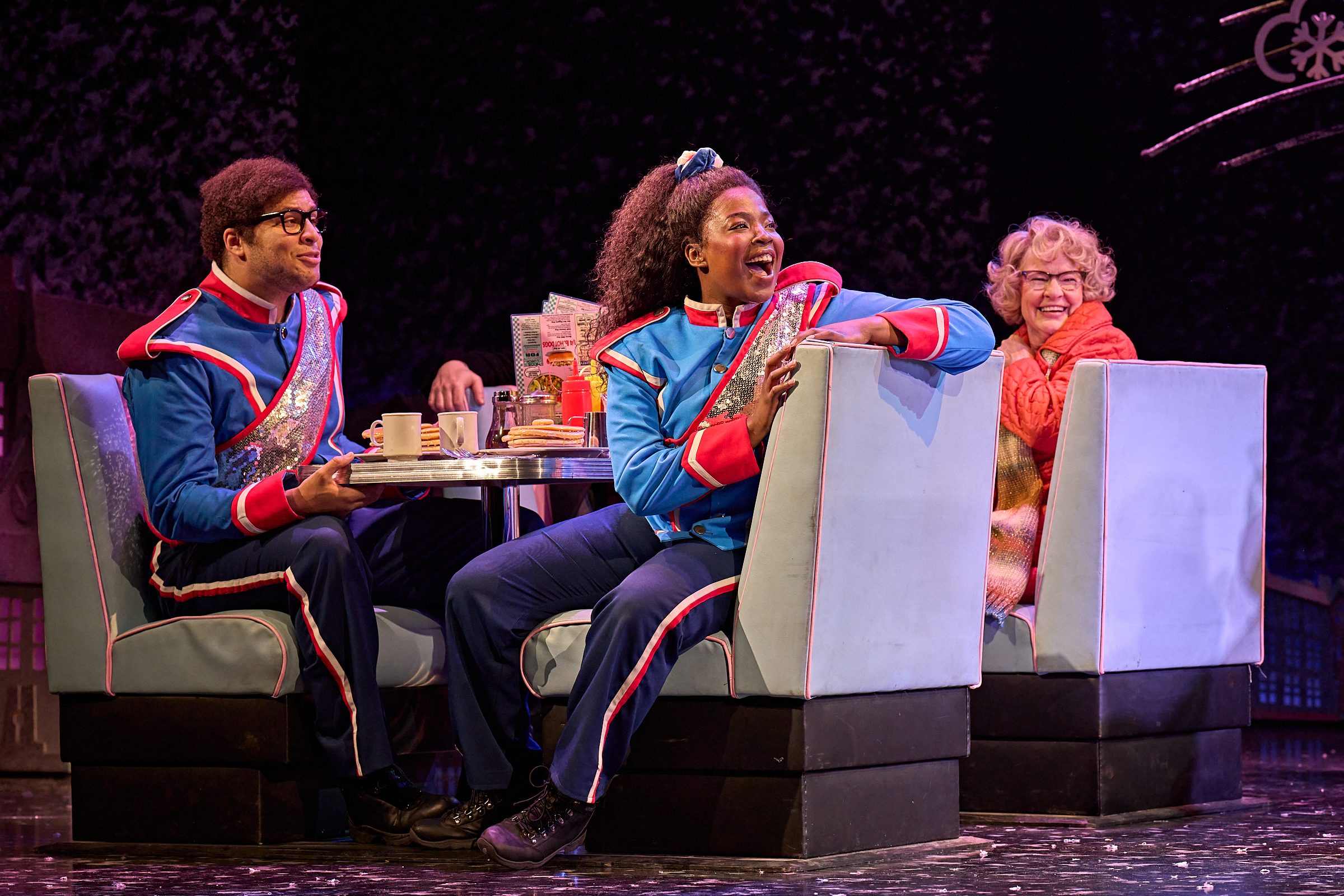
One of my favorite changes comes in “Philanthropy,” when Phil is racing around town doing good deeds during his perfect day.
The number used to end with Doris – the waitress who “dreams of being a singer, but she can’t really sing,” in Phil’s words – taking center stage. She’d sing a series of off-key notes while Phil attempted to assist by cueing her into the right one. After a few tries, he’d give up and start to walk away, and then Doris would deliver a big showstopping belt – in tune.
In this year’s version, with a smaller cast, there is no Doris character, but her wishes of learning to sing have been transferred to Debbie (engagingly played by Kamilla Fernandes), the “Good Weather with Phil Connors” fan attending the Groundhog Day celebrations with her boyfriend Fred. And this time, Phil never gives up on her: he stays to help until she gets it right. It’s a wonderful, joyful change that sacrifices maybe a split second of humor for something that fits Phil’s character and what we’re supposed to take away from this sequence so much better.
I love, too, how giving the singing attribute to Debbie unlocks other changes that deepen the characters. In “Philanthropy,” Fred, too, is there to help cheer her on alongside Phil, and she looks back at Fred for reassurance before her final note. And in “Punxsutawney Rock” later, Debbie is now the singer (previously it was the piano teacher), joining Phil up on the platform to entertain the crowd. It’s a completely logical, and immensely satisfying, end to that arc.
There’s one more change with Debbie that I really love here. In 2016, in the scene where Phil reveals the secrets of the people in the diner, here’s what he said about Debbie:
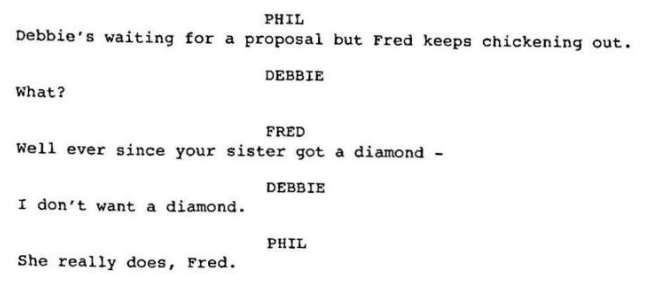
I wasn’t a huge fan of this, because it implies the character cares more about a diamond than marrying Fred, which doesn’t ring true. Plus, although the couple ended the show engaged, she never actually got her diamond, so it felt like it was setting up something that never arrived.
In the current version, Phil no longer says that Debbie wants a diamond – instead, he simply says, “Close the deal, Freddie!” That little tweak redirects the focus from the hardware to Debbie and Fred’s relationship, which means that when we later see them at the show’s end, we know Phil has gently pushed the couple towards what they really want, which is to be together. It’s a sweet ending that’s much more befitting of the two of them.
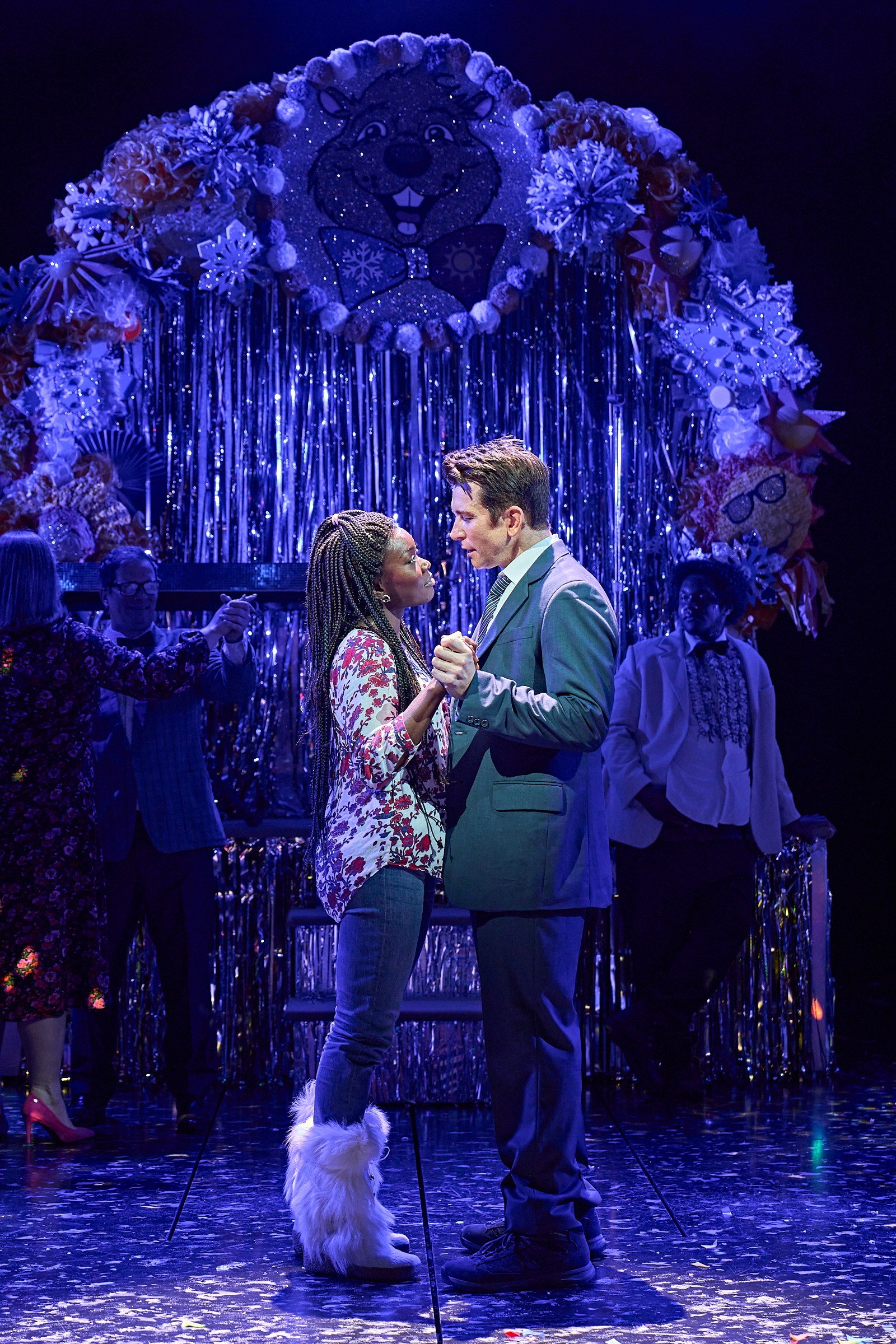
Other updates, meanwhile, tighten the connection between Phil and Rita, and in doing so, help better illuminate Phil’s arc, too.
This is perhaps most prominent in “If I Had My Time Again,” a sequence which has undergone some significant changes. The song itself has been tweaked, with some new lyrics and orchestration, and the staging is now streamlined to put the focus on Phil and Rita.
There’s also now more of a journey for Phil in this scene, as he goes from despondence to a grudging curiosity about Rita’s perspective to a growing understanding of a different path forward.
The loveliest and most meaningful of these modifications is the moment with the Tilt-a-Whirl – a change brought in for the 2017 Broadway run, and here in a slightly revised format (which literally brings Phil and Rita closer together). It’s maybe the most beautiful moment of the show now, with colored lights twinkling amidst the darkened stage as Phil and Rita spin round, each revolution illuminating the unfolding shift in Phil’s thinking as he gazes at Rita in something like wonder, watching her simple joy. It’s such a pivotal, breathtaking moment that it’s astonishing it wasn’t there from the show’s beginning.
The new ending of the song is just lovely, too: it gives Phil and Rita a real moment of connection, and also more explicitly sets up the conclusion to their story with Rita’s added line about “kiss[ing] all the boys I was too afraid to kiss.”
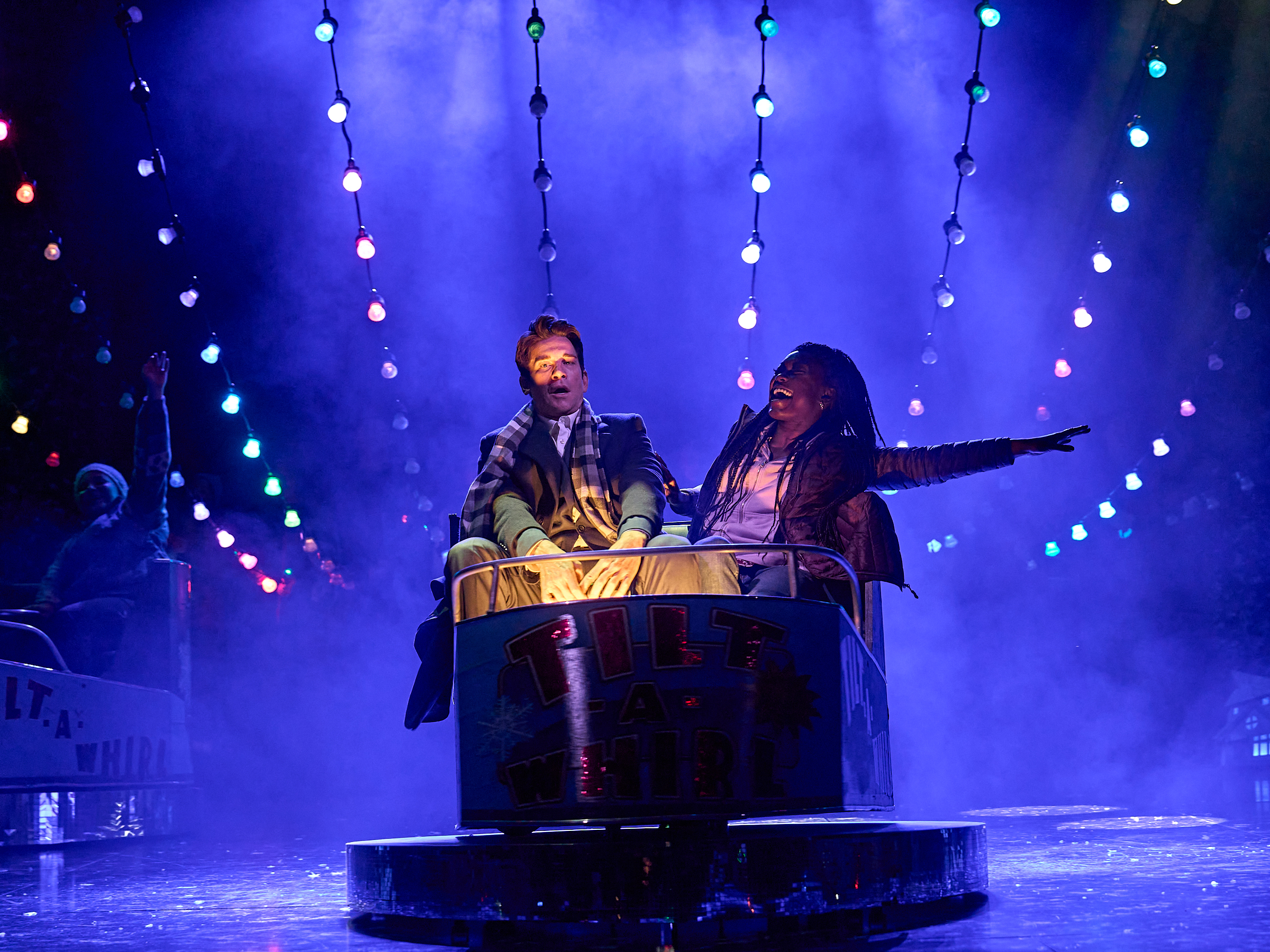
There’s also been an effort to pitch the lead-up to Phil and Rita’s kiss a little more towards the romantic. Phil still points out the 18-wheeler and the public toilets, but the “guy vomiting” has been removed – and instead, there’s a sweet little moment where he shows Rita some of the town’s more picturesque sights, like its ice cream shop. A couple of times, too, I’ve seen Karl deliver the line “It is beautiful” (in reference to the falling snow) looking directly at Rita, a perfectly executed example of “Girls Stare at Scenery, Boys Stare at Girls.”
Tanisha Spring adds depth to these moments with her layered portrayal of Rita. She’s sharp, deflecting Phil’s insults and come-ons with an ease that hints at a whole history of dealing with bad behavior from men. But Spring demonstrates that this is in essence a defense mechanism protecting who Rita really is when she’s unencumbered by these annoyances. She’s kind, helping pick up the tray that Debbie knocks over in the diner, and (in some added dialogue) offering to help Phil when he flees Day 2. And she takes delight in the small things, smiling at the Gobbler’s Knob celebrations while Phil is off in a corner trying to get reception on his phone, just waiting for it all to end. Spring’s depiction of a toughness that doesn’t diminish the character’s generosity of spirit – spiked with moments of humor, such as in her reactions to Phil’s antics or her reflection on women’s places in stories like these – make for an utterly compelling Rita.
Elsewhere in the cast, Eve Norris brings a vulnerable self-awareness to her rueful Nancy, and Andrew Langtree, back as Ned Ryerson from the 2016 run, makes a great foil for Phil with his undaunted enthusiasm hiding a quiet personal sorrow.
Credit must also go to the incredibly hardworking and talented group bringing real heart to the denizens of Punxsutawney: the ensemble (Aimée Fisher, Nick Hayes, Jacqueline Hughes, Ashlee Irish, Chris Jenkins, Billy Nevers, Mark Pearce, Ben Redfern, Durone Stokes, Alex Stoll, Jez Unwin, Annie Wensak) as well as the swings regularly saving the day (Jasmin Colangelo, Kelly Ewins, Zack Guest, Rachel Moran, Matthew Whennell-Clark). For just one example of the extraordinary effort that goes into making this show happen, check out this cheat sheet posted by Jenkins showing his 20 costume changes throughout the show.
While the show has changed in many ways, one thing remains constant: Groundhog Day is a brilliant piece of theatre. It’s the ultimate feel-good show – but while that term is often used to describe lightweight, insubstantial fare, here it’s a full-course meal. It will put a smile on your face both from a pratfall and from the fact that it opens up a path for a better, happier way to live life. It comes out on top in terms of sheer entertainment, but also in terms of deeper philosophical thinking. It’s probably the funniest show I’ve ever seen, but also the most profound – the most enjoyable, but also the most moving. And the fact that it excels on both levels makes it something unique and, to my view, unsurpassed in theatre.
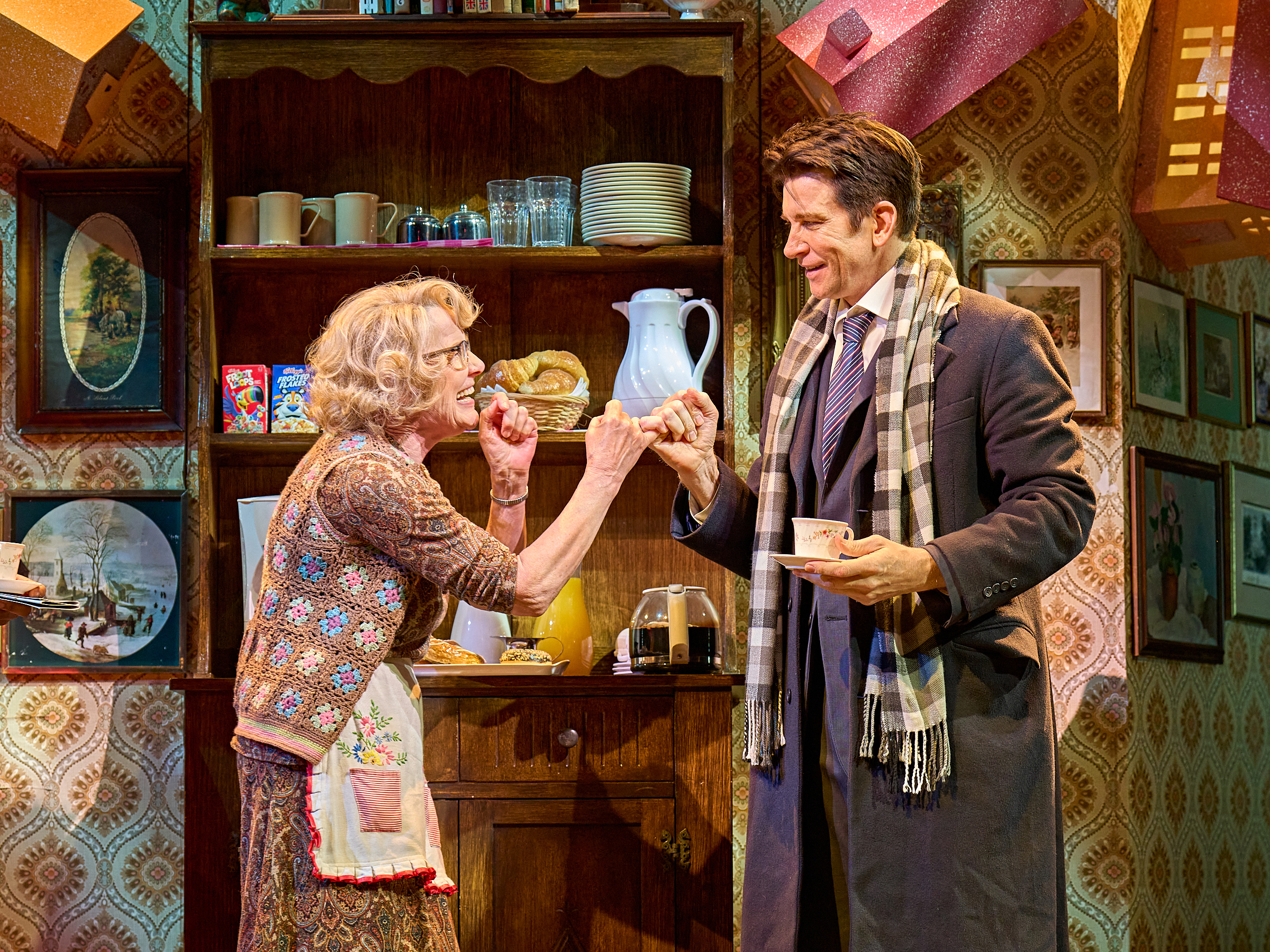
There’s one interesting element of the revival that wasn’t entirely intentional, and it’s the fact that it took seven years to return. It’s strange amount of time to reckon with, seven years. On one hand, 2016 feels like yesterday. Watching Groundhog Day is a minor form of time travel: if you saw the show before, go now and you’ll be jolted right back to the same feelings you had then.
Yet on the other hand, it seems like another world. Think of all that’s happened since the original run: the Brexit vote of that summer becoming a reality, Trump, the pandemic. More personally, I’m now nearly Rita’s age, and finding new resonances in her character this time round.
Groundhog Day is a show that asks deep philosophical questions about how you want to live your life, and so if you’re anything like me, your thoughts naturally turn to the seven years that have passed since the musical was last seen in London. You wonder if you’ve lived up to the lessons the show taught you in 2016. You mourn the wisdom you’ve forgotten since then, and vow not to do so again.
But there are also places where you can see the light it gifted you shining through. I think of the things I’ve tried in the intervening years, the things I said yes to – moving to the West End, picking up powerlifting, taking a playwriting course, giving archery a go, learning Latin – and I can see its influence.
And then there are the less obvious changes, things unilluminated without excavation. I came across an old email I sent in 2016 where I said of the show: “It actually made a cynic like me feel good about the world which is something of a miracle.” Reading it stopped me cold. Was that really how I saw myself back then, at all of 28? That’s not me anymore, and I know that’s a change Groundhog Day sparked.
But while its impact on the last seven years is clear, there’s still so much more to learn from this show, and this revival has provided a stirring reminder of its teachings – of living mindfully, of appreciating the people around you, of finding joy in the everyday (to name just a few). I’m grateful for the chance to revisit its philosophy, and to be inspired by the example of the show itself, ever striving for the next best version, no matter how long it takes.
- Caveat here that my view of the changes (in 2016 and 2023) is limited as I haven’t been to most performances of the show. Any thoughts on why certain changes were made, or how these evolved, are my own interpretation only, based on the performances I went to. For the 2016 changes in particular, I’m relying on my memory and hastily scribbled notes from the time – I’ve done my best to make sure everything is accurate but if you see any mistakes in what I’ve written, please let me know. Sadly, I wasn’t able to go to the 2017 Broadway run at all, so I have only a minimal amount of information on changes from that run, which is why I don’t go into that here. ↩︎